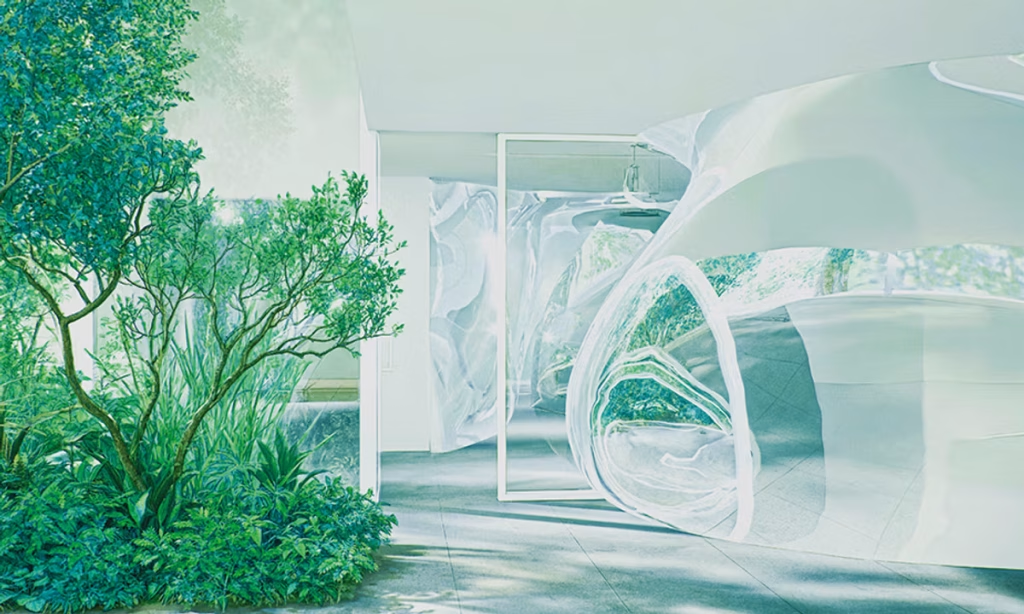The designer of this year’s AWT Bar is Ichio Matsuzawa, a 44-year-old Tokyo-based independent architect, who has been commissioned to design an inviting and memorable total environment based on transparency and distortion.
While working for Sanaa beginning in 2007, Matsuzawa was the design lead for several major museum projects around the world, including Louvre-Lens and the expansion of the Art Gallery of New South Wales. He also demonstrated a knack for purely aesthetic transparent spaces, such as temporary installations at Mies van der Rohe’s Barcelona pavilion in 2008 and at the Sharjah Biennial in 2013, as well as a pair of “Art Houses” on the island of Inujima.
Matsuzawa’s plan for the AWT Bar pushes his experimental vision of pure space in an ambitious new direction. Seeking to achieve, as he puts it, “spatial experiences based on perception and sensation”, Matsuzawa has devised a series of warped, freestanding walls made of clear acrylic, which spill from the interior space to the terrace outside. The walls form softly defined nooks and enclosures where people can sit, eat and drink. Each wall is a single sheet of acrylic which has been heat-deformed into a complex organic surface, rippled like liquid. “It’s not just about making a bar, but about using architectural relationships to stimulate relationships between people,” Matsuzawa says.
Artist cocktails created by Tsuyoshi Ozawa, Chim Pom from Smappa!Group and Miwa Yanagi will be on offer at the AWT Bar
Photo: Katsuhiro Saiki
Though the effect is effortless, like breezes made visible, the fabrication is intense and unforgiving, involving steel moulds and a gigantic oven. Matsuzawa says that “people moving through the space will experience a flow of fleeting, distorted visual images, and that continual transformation, rather than any kind of solidity, will characterise their individual spatial experience.” The ensemble is completed by seating designed by the architect and a soundscape programmed by Yusuke Nakano.
Though Matsuzawa’s walls call to mind sculptural precedents as diverse as Richard Serra, Robert Irwin and Olafur Eliasson, and may in fact be enticing to collectors seeking to repurpose them, he insists that they are not objects. “I’m making perceptual architecture,” he says. “It’s not complete without people.”
